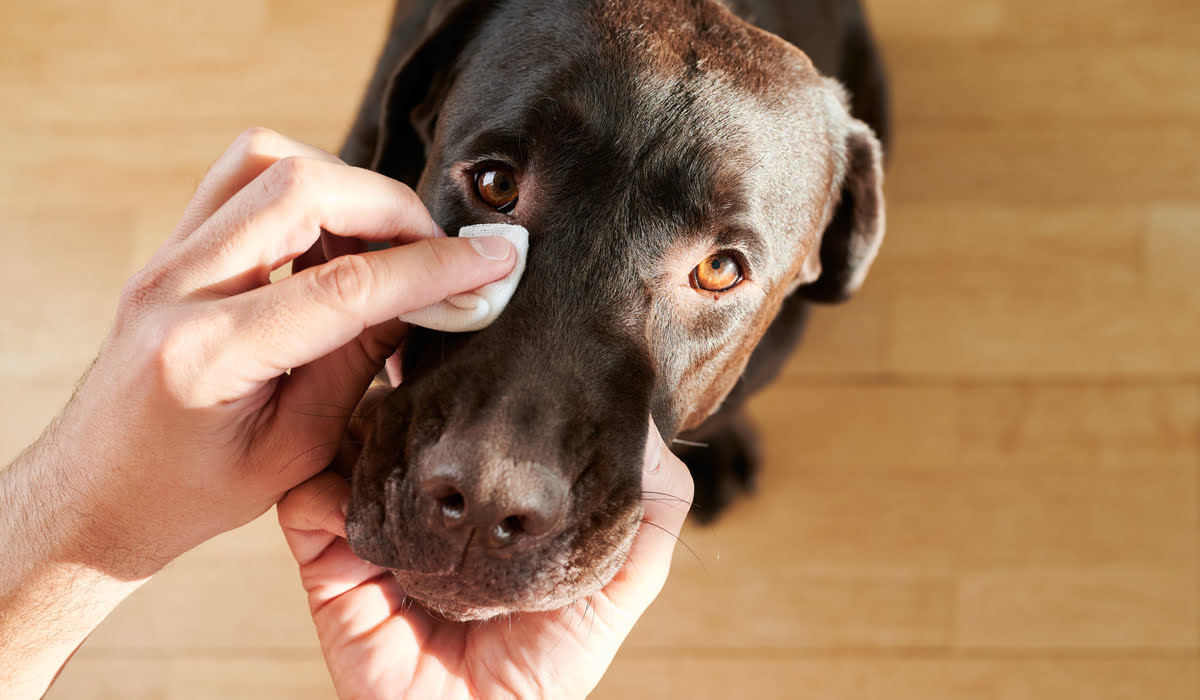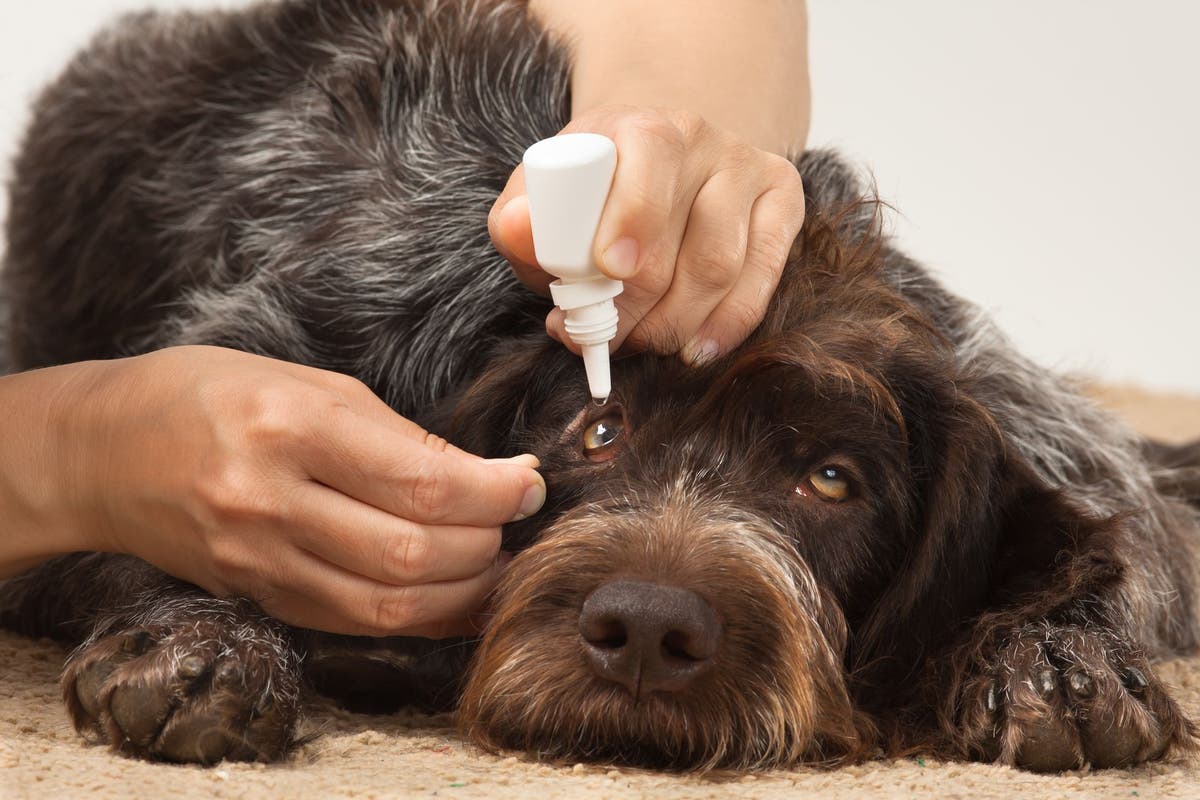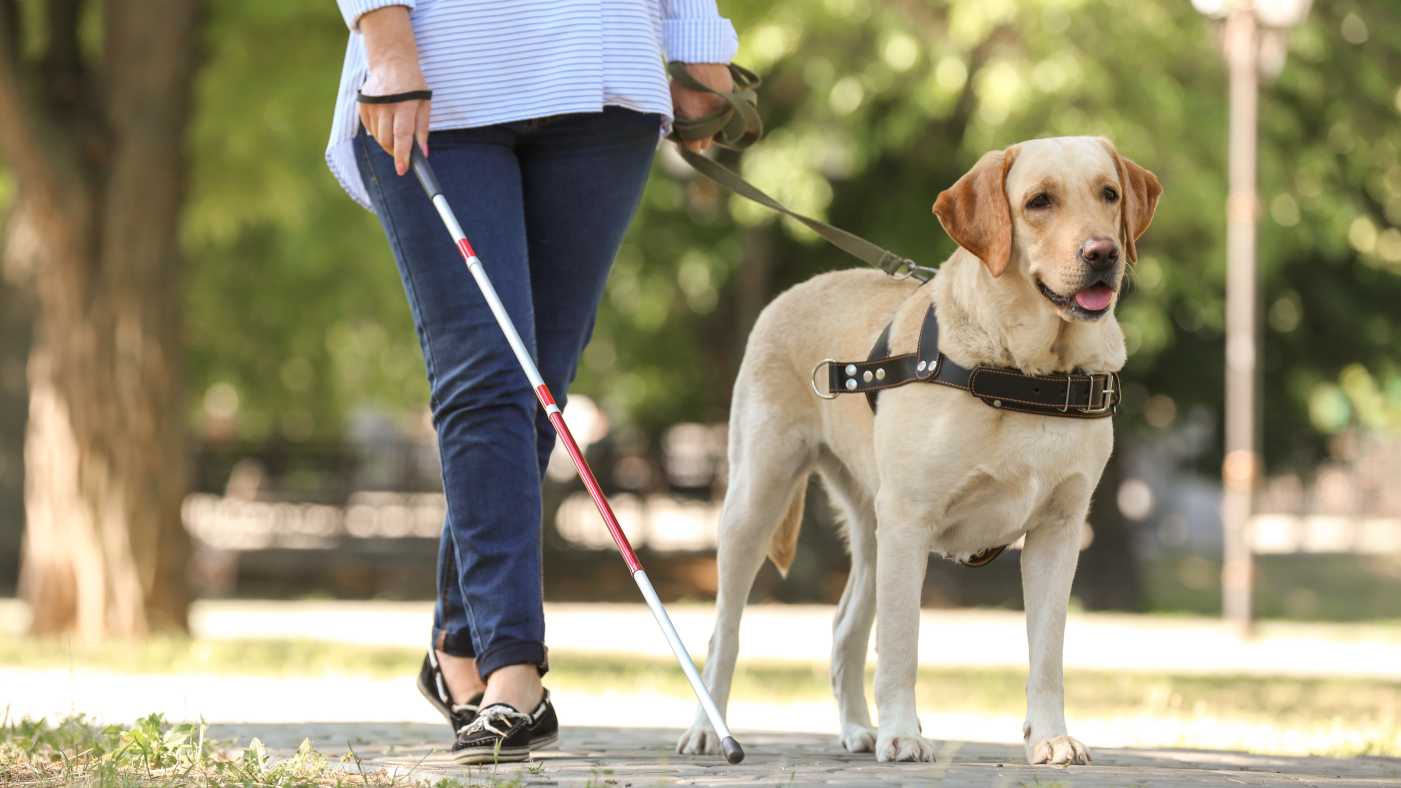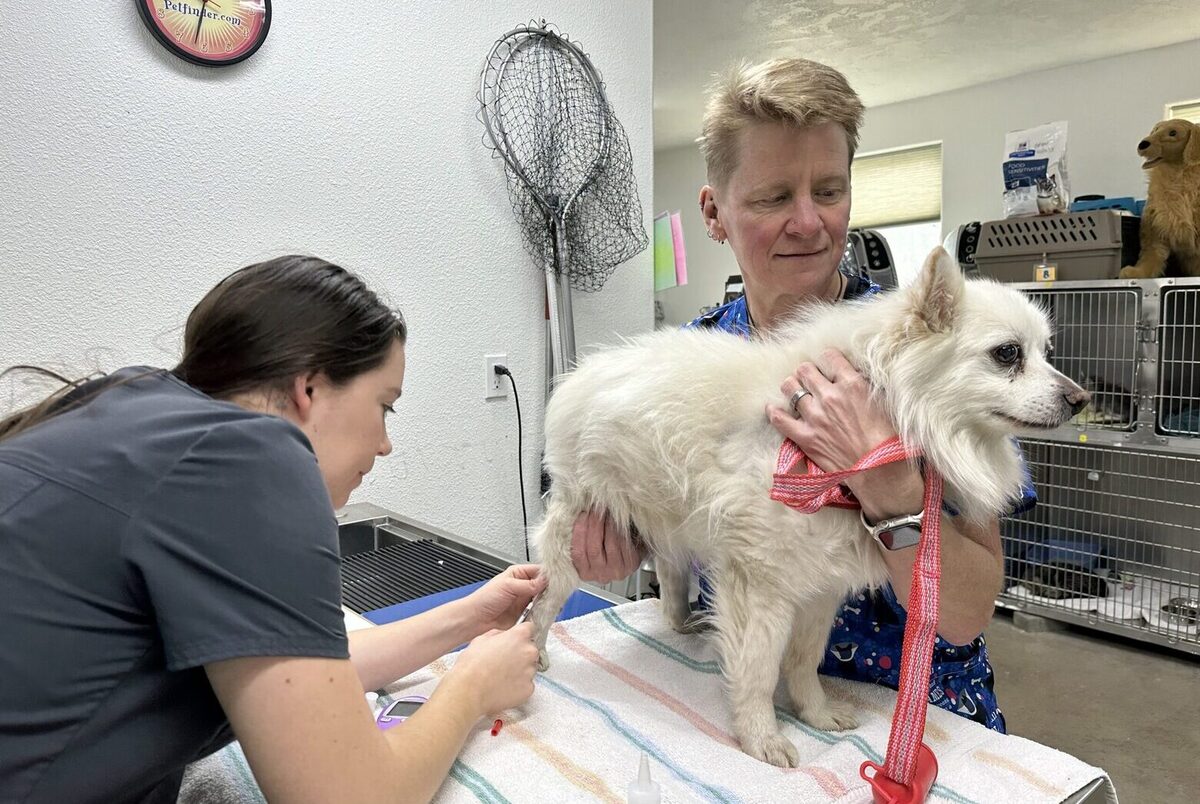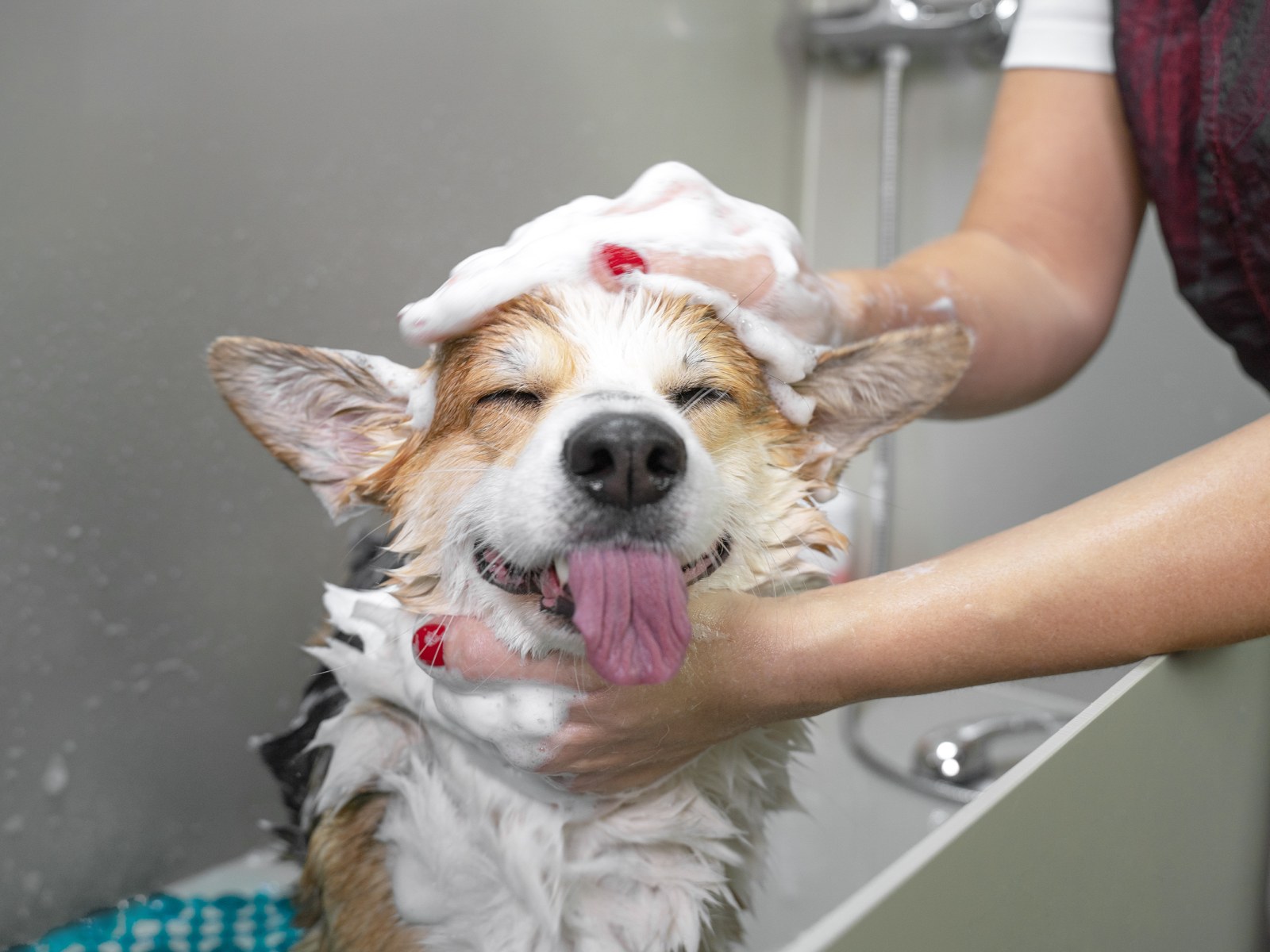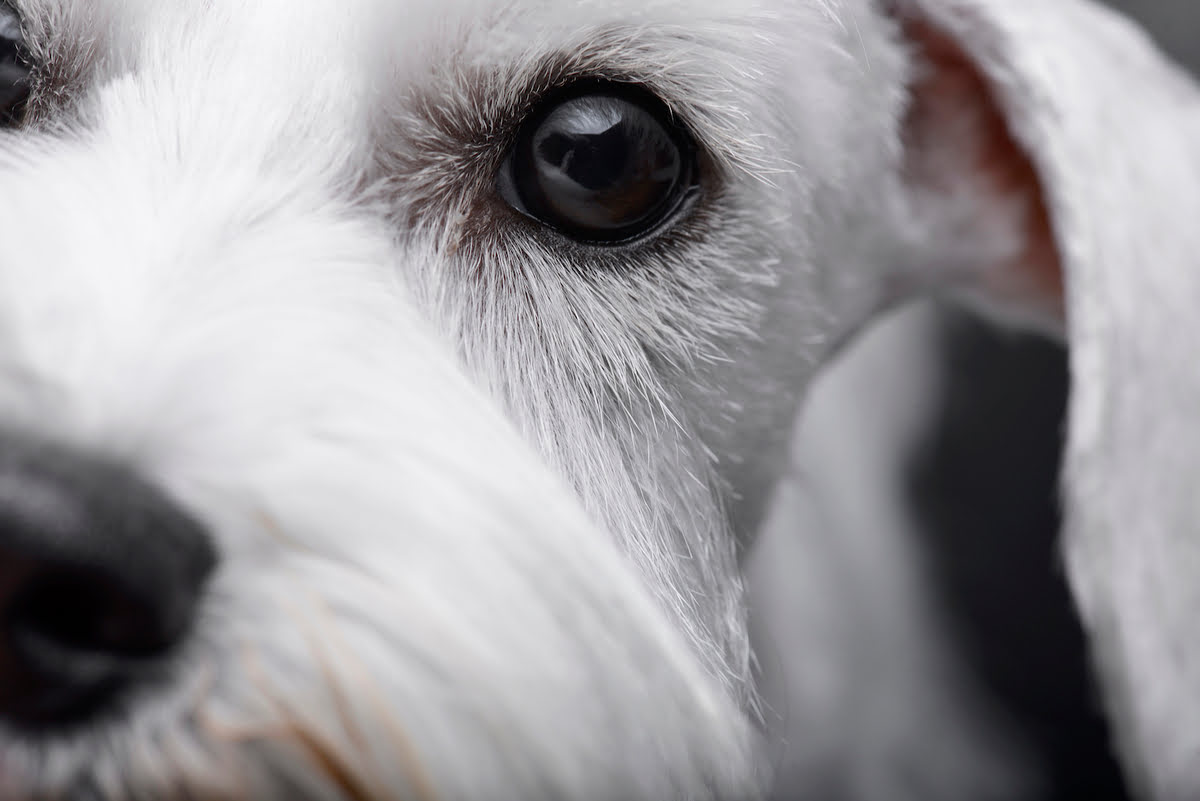Home>Health & Wellness>Common Health Issues>What Will The Vet Do For Eye Allergies In Dogs
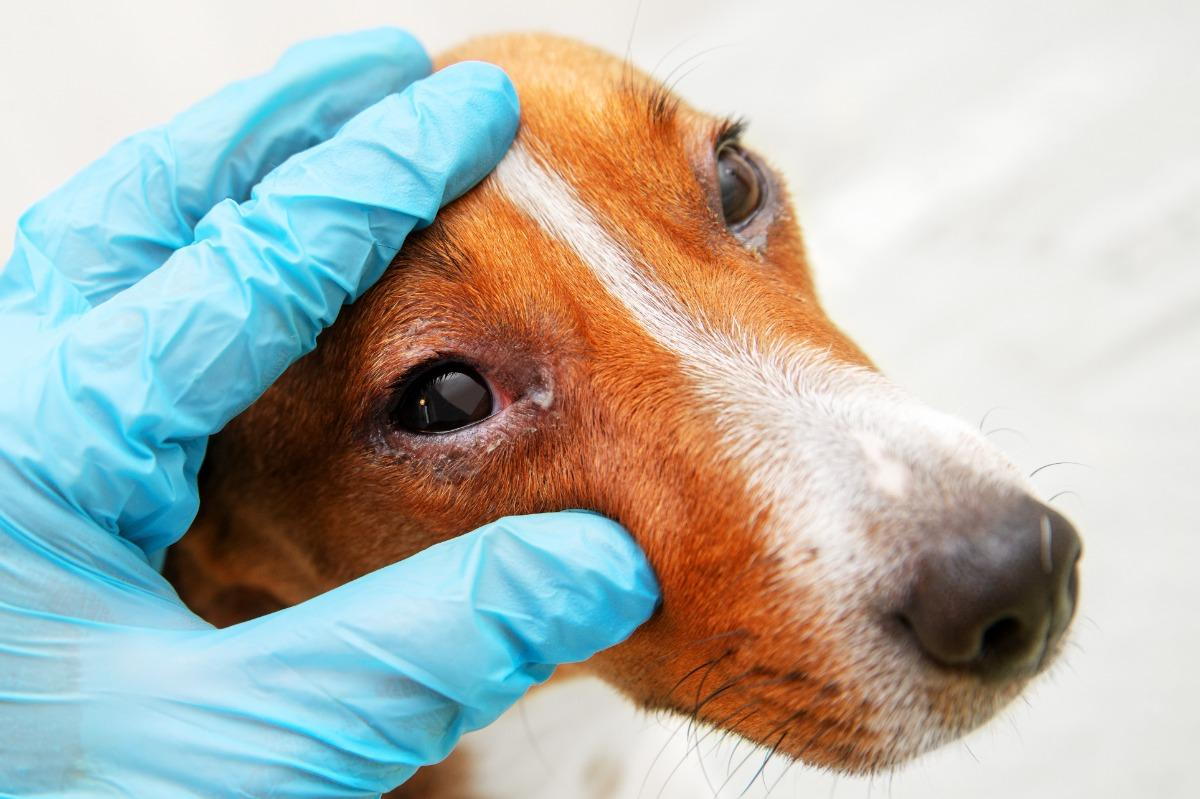

Common Health Issues
What Will The Vet Do For Eye Allergies In Dogs
Published: January 26, 2024
Learn how vets treat eye allergies in dogs and other common health issues. Find out what to expect and how to help your furry friend.
(Many of the links in this article redirect to a specific reviewed product. Your purchase of these products through affiliate links helps to generate commission for Pawsomeoldies.com, at no extra cost. Learn more)
Table of Contents
Introduction
Eye allergies in dogs can be a source of discomfort and concern for pet owners. Just like humans, dogs can also experience allergic reactions that affect their eyes. These allergies can be triggered by various environmental factors, such as pollen, dust, mold, or certain chemicals. When a dog experiences eye allergies, it can lead to symptoms like redness, itching, swelling, and excessive tearing. As a responsible pet owner, it's essential to understand the causes, symptoms, diagnosis, treatment options, and preventive measures related to eye allergies in dogs.
Understanding how to identify and address eye allergies in dogs is crucial for maintaining their overall health and well-being. By gaining insight into the potential triggers and available treatment methods, pet owners can provide their furry companions with the care and attention they need to alleviate discomfort and promote ocular health. In the following sections, we will delve into the intricacies of eye allergies in dogs, including how veterinarians diagnose and treat these conditions, as well as strategies for preventing future occurrences.
Understanding Eye Allergies in Dogs
Eye allergies in dogs, also known as allergic conjunctivitis, occur when a dog's immune system overreacts to a particular substance, resulting in an inflammatory response in the eyes. These allergens can vary widely and may include pollen, dust mites, mold, certain types of grass, or even specific ingredients in their food. When a dog comes into contact with these allergens, it can trigger a range of uncomfortable symptoms related to their eyes.
The most common symptoms of eye allergies in dogs include redness, itching, swelling, excessive tearing, and sometimes even a clear discharge from the eyes. Dogs may exhibit signs of discomfort, such as rubbing their eyes with their paws or against furniture, and may also experience sensitivity to light. In some cases, the allergic reaction can lead to secondary issues, such as bacterial infections, due to the constant irritation and rubbing of the eyes.
It's important to note that certain dog breeds may be more prone to developing eye allergies. Breeds with prominent and protruding eyes, such as Pugs and Bulldogs, are more susceptible to environmental irritants and allergens. Additionally, dogs with existing skin allergies or a history of allergic reactions may also be at a higher risk of developing eye allergies.
Understanding the potential triggers for eye allergies in dogs is crucial for pet owners. By identifying the specific allergens that affect their furry companions, they can take proactive measures to minimize exposure and alleviate discomfort. Furthermore, recognizing the symptoms of eye allergies allows pet owners to seek timely veterinary care, preventing the condition from escalating and causing further complications for their beloved pets.
In the next section, we will explore the diagnostic process for identifying eye allergies in dogs, shedding light on the steps veterinarians take to pinpoint the underlying causes of ocular discomfort in canine patients.
Diagnosing Eye Allergies in Dogs
Diagnosing eye allergies in dogs requires a comprehensive approach that involves both observation of clinical signs and, in some cases, specialized testing. When a dog exhibits symptoms indicative of eye allergies, such as redness, itching, swelling, and excessive tearing, pet owners should seek veterinary care to determine the underlying cause and establish an effective treatment plan.
During the diagnostic process, veterinarians typically begin by conducting a thorough physical examination of the dog's eyes. This involves assessing the appearance of the eyes, checking for any discharge or inflammation, and evaluating the extent of ocular irritation. By closely examining the eyes, veterinarians can gather valuable insights into the nature and severity of the allergic reaction.
In addition to the physical examination, veterinarians may inquire about the dog's medical history and any recent changes in their environment or diet. Understanding the dog's exposure to potential allergens, such as pollen, dust, or certain foods, can aid in identifying the specific triggers contributing to the allergic response.
In some cases, veterinarians may recommend further diagnostic tests to confirm the presence of eye allergies and rule out other potential eye conditions. These tests may include tear film evaluation, which assesses the quantity and quality of tears produced by the eyes, as well as ocular swabs to check for any secondary bacterial infections resulting from the allergic reaction.
Furthermore, specialized allergy testing, such as intradermal skin testing or blood tests, may be conducted to pinpoint the specific allergens causing the dog's allergic response. These tests can provide valuable information about the dog's sensitivities to various environmental and food-related allergens, enabling veterinarians to tailor treatment strategies to address the dog's unique allergic triggers.
By combining the findings from the physical examination, medical history review, and diagnostic tests, veterinarians can accurately diagnose eye allergies in dogs and develop a targeted treatment plan. This individualized approach is essential for addressing the underlying causes of the allergic reaction and alleviating the dog's ocular discomfort effectively.
In the subsequent section, we will delve into the diverse treatment options available for managing eye allergies in dogs, shedding light on the approaches veterinarians employ to provide relief and improve the overall ocular health of canine patients.
Treatment Options for Eye Allergies in Dogs
When it comes to treating eye allergies in dogs, veterinarians employ a multifaceted approach aimed at alleviating ocular discomfort, addressing the underlying allergic response, and preventing future allergic reactions. The treatment plan is tailored to the specific needs of each canine patient, taking into account their unique allergen sensitivities and the severity of their symptoms.
-
Topical Ophthalmic Solutions: Veterinarians often prescribe ophthalmic solutions, such as antihistamine or steroid eye drops, to reduce inflammation, itching, and redness in the eyes. These medications help alleviate the immediate discomfort caused by the allergic reaction and promote healing of the ocular tissues.
-
Oral Medications: In cases of severe or persistent eye allergies, veterinarians may recommend oral antihistamines or corticosteroids to provide systemic relief from allergic symptoms. These medications can help manage widespread allergic reactions and minimize the overall inflammatory response in the dog's body.
-
Hygiene and Environmental Management: Pet owners play a crucial role in managing their dog's eye allergies by maintaining a clean and allergen-free environment. Regularly cleaning the dog's living spaces, using hypoallergenic bedding, and minimizing exposure to potential allergens, such as pollen and dust, can significantly reduce the frequency and severity of allergic reactions.
-
Dietary Modifications: In cases where food allergies contribute to the dog's ocular discomfort, veterinarians may recommend dietary changes to eliminate allergenic ingredients from the dog's meals. Switching to hypoallergenic or limited-ingredient diets can help alleviate food-related allergic responses and improve the overall well-being of the dog.
-
Allergen-Specific Immunotherapy: For dogs with persistent and severe allergies, allergen-specific immunotherapy, commonly known as allergy shots, may be recommended. This treatment involves administering gradually increasing doses of the dog's specific allergens to desensitize their immune system and reduce the severity of allergic reactions over time.
-
Complementary Therapies: Some veterinarians may explore the use of complementary therapies, such as cold compresses, soothing eye washes, or natural supplements with anti-inflammatory properties, to provide additional relief and support the dog's ocular health.
By combining these treatment modalities, veterinarians can effectively manage eye allergies in dogs and improve the overall quality of life for canine patients. It's important for pet owners to closely follow the treatment recommendations provided by the veterinarian and maintain open communication to ensure the ongoing well-being of their furry companions.
In the subsequent section, we will explore proactive measures and strategies for preventing eye allergies in dogs, empowering pet owners to create a supportive environment that minimizes the risk of allergic reactions for their beloved pets.
Preventing Eye Allergies in Dogs
Preventing eye allergies in dogs involves proactive measures aimed at minimizing exposure to potential allergens and creating a supportive environment that promotes ocular health. By implementing preventive strategies, pet owners can significantly reduce the risk of their furry companions developing allergic reactions that affect their eyes.
Read more: How Much Is A Dog Eye Test At A Vet?
Environmental Management
Maintaining a clean and allergen-free environment is essential for preventing eye allergies in dogs. Regularly cleaning the dog's living spaces, including bedding, carpets, and furniture, helps minimize the accumulation of dust, pollen, and other potential allergens. Using hypoallergenic bedding and air purifiers can further reduce the presence of airborne irritants, creating a more comfortable environment for the dog.
Allergen Avoidance
Identifying and minimizing the dog's exposure to specific allergens, such as pollen, mold, and certain grasses, can play a pivotal role in preventing allergic reactions. Pet owners can adjust their walking routes to avoid areas with high pollen counts, especially during peak allergy seasons. Additionally, wiping the dog's paws and fur after outdoor activities can help remove potential allergens and reduce the likelihood of ocular irritation.
Regular Grooming
Maintaining proper grooming practices for dogs can contribute to preventing eye allergies. Regular bathing and brushing help remove pollen, dust, and other allergens from the dog's coat, reducing the risk of these irritants coming into contact with the eyes. Keeping the dog's fur trimmed around the eyes can also minimize the accumulation of allergens and prevent ocular discomfort.
Balanced Nutrition
Providing a balanced and nutritious diet is essential for supporting the dog's overall immune system and minimizing the risk of food-related allergic reactions. High-quality, hypoallergenic dog food can help prevent dietary triggers that contribute to eye allergies. Additionally, ensuring adequate hydration and incorporating omega-3 fatty acids into the dog's diet can support ocular health and reduce the likelihood of allergic responses.
Veterinary Guidance
Regular veterinary check-ups and open communication with the veterinarian are crucial for preventing eye allergies in dogs. Veterinarians can provide valuable guidance on allergen-specific preventive measures, recommend suitable dietary options, and offer insights into seasonal allergen patterns that may affect the dog. By staying informed and proactive, pet owners can take proactive steps to minimize the risk of eye allergies and promote their dog's overall well-being.
By incorporating these preventive strategies into their daily care routines, pet owners can create a supportive and allergen-minimized environment for their dogs, reducing the likelihood of ocular discomfort and allergic reactions. Prioritizing preventive measures empowers pet owners to safeguard their furry companions against the challenges posed by eye allergies, promoting a healthier and more comfortable life for their beloved pets.
Conclusion
In conclusion, eye allergies in dogs can pose significant challenges for both pets and their owners. Understanding the underlying causes, symptoms, diagnosis, treatment options, and preventive measures related to canine eye allergies is essential for promoting the ocular health and overall well-being of furry companions. By recognizing the potential triggers and seeking timely veterinary care, pet owners can effectively address their dog's ocular discomfort and minimize the impact of allergic reactions.
The intricate nature of eye allergies in dogs underscores the importance of a comprehensive approach to diagnosis and treatment. Veterinarians play a pivotal role in accurately identifying the specific allergens affecting canine patients and devising tailored treatment plans to alleviate discomfort and promote healing. Through a combination of topical ophthalmic solutions, oral medications, environmental management, dietary modifications, and, in some cases, allergen-specific immunotherapy, veterinarians can effectively manage eye allergies and improve the quality of life for dogs.
Furthermore, proactive measures for preventing eye allergies, such as environmental management, allergen avoidance, regular grooming, balanced nutrition, and ongoing veterinary guidance, empower pet owners to create a supportive and allergen-minimized environment for their beloved pets. By implementing these preventive strategies, pet owners can significantly reduce the risk of their dogs developing allergic reactions that affect their eyes, fostering a healthier and more comfortable life for their furry companions.
Ultimately, the well-being of dogs with eye allergies hinges on the collaborative efforts of pet owners and veterinary professionals. By staying informed, proactive, and attentive to their dog's unique needs, pet owners can navigate the challenges posed by eye allergies and provide their furry companions with the care and support they deserve. Through a combination of compassionate understanding, effective treatment, and preventive measures, pet owners can help their dogs thrive in a comfortable and allergen-minimized environment, free from the discomfort of eye allergies.



